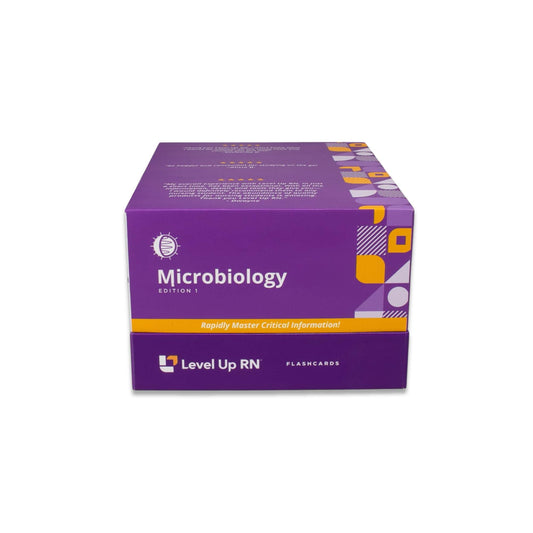Microbiology, part 54: Control of Growth - Antimicrobial Drug Terminology
Key terms related to antimicrobial drugs, including: selective toxicity, bactericidal, bacteriostatic, mode of action (or mechanism of action), narrow-spectrum antibiotics, broad-spectrum antibiotics, dose and dosage, route of administration, synergism, and antagonism.
Quiz Questions
What do you call the ability of an antibiotic to kill bacteria while causing minimal harm to the host?
What do you call the ability of an antibiotic to kill bacteria while causing minimal harm to the host?
Does a bacteriostatic medication kill or inhibit bacterial growth?
Does a bacteriostatic medication kill or inhibit bacterial growth?
What term describes two or more drugs used in combination that provide an effect that is better than the sum of their individual effects?
What term describes two or more drugs used in combination that provide an effect that is better than the sum of their individual effects?
What term describes the specific method used to introduce a drug into the body?
What term describes the specific method used to introduce a drug into the body?
Full Transcript: Microbiology, part 54: Control of Growth - Antimicrobial Drug Terminology
Full Transcript: Microbiology, part 54: Control of Growth - Antimicrobial Drug Terminology
Hi, I'm Cathy with Level Up RN. In this video, I will be going over some important terms related to antimicrobial medications. And then in my next video, I'll start going over the different classes of antimicrobial medications. At the end of the video, I'm going to give you guys a little quiz to test your knowledge of some of the key facts I'll be covering. So be sure to stay for that. And if you have our Level Up RN, microbiology flashcards, go ahead and pull out your flashcards. So you can follow along with me and pay close attention to the bold red text on the back of the cards because those are the things that you are likely to get tested on. First up, we have selective toxicity. This refers to the ability of an antimicrobial medication to effectively kill or inhibit the growth of a microorganism while causing little to no damage to the host. So for example, when you take an antibiotic for a bacterial infection, you want that medication to kill the bacteria but not cause damage to your body.
Next, let's talk about the difference between bactericidal and bacteriostatic. If a medication is bactericidal, this means it will kill the bacteria. Whereas, if a medication is bacteriostatic, it will inhibit the growth of the bacteria but not kill it. Mode of action, which is also referred to as, mechanism of action, is the way that an antimicrobial drug affects microbes at the cellular level, inhibiting their ability to function and replicate. So, for example, some antibiotics work by inhibiting cell wall synthesis. Whereas others, alter membrane permeability or inhibit protein synthesis, for example. Now let's talk about the difference between narrow spectrum and broad spectrum. So if an antibiotic is narrow spectrum, this means that it is effective against a smaller subset of bacteria. So in the clinical setting, if we know exactly which bacteria is causing a patient's infection, then we can typically give them a narrow-spectrum antibiotic. And this is good because narrow-spectrum antibiotics tend to have less severe side effects and are less likely to disrupt the patient's microbiome. Broad-spectrum antibiotics, on the other hand, are effective against a wide range of bacteria. So in the clinical setting, broad-spectrum antibiotics are used when the cause of the patient's infection is unknown or the patient's condition is severe. Unfortunately, broad-spectrum antibiotics can cause more severe side effects, disrupt the patient's microbiome, and also contribute to antibiotic resistance.
Dose refers to the amount of medication that is given at a specific time. So an example of dose would be, 500 mg of amoxicillin. Dosage is a broader term that includes, the dose, the frequency, and duration of treatment. So an example of dosage would be, 500 mg of amoxicillin given twice a day for 10 days. Route of administration is how a drug is introduced into the body. So some antimicrobial agents are taken orally. Some need to be administered through an IV. Others can be applied topically. There are many routes of administration. Synergism is where two or more drugs are used in combination to achieve an effect that is greater than the sum of the individual effects. This is often accomplished by using two drugs with different modes of action. So to use a math analogy, let's say that drug A has an effect of 4 and drug B has an effect of 3. If we add those two together, we get 7. But if those drugs are synergistic, their combined effect could be 10. Antagonism is basically the opposite of synergism. This is when two or more drugs produce a harmful effect when taken together. So for example, one drug may cause the other drug to be less effective, or one drug can cause the other drug to reach toxic levels in the body.
All right, it's quiz time, and I have four questions for you.
Question number one, what do you call the ability of an antibiotic to kill bacteria while causing minimal harm to the host?
The answer is...selective toxicity.
Question number two, does a bacteriostatic medication kill or inhibit bacterial growth?
The answer is...inhibit.
Question number three, what term describes two or more drugs used in combination that provide an effect that is better than the sum of their individual effects?
The answer is...synergism.
And question number four, what term describes the specific method used to introduce a drug into the body?
The answer is...route of administration.
All right, that's it for this video. I hope it was helpful. Take care and good luck with studying.
[BLOOPERS]
To the ability of a might and bur dah bur. But if these two drigs are-- drigs-- drugs-- I'm [inaudible].


